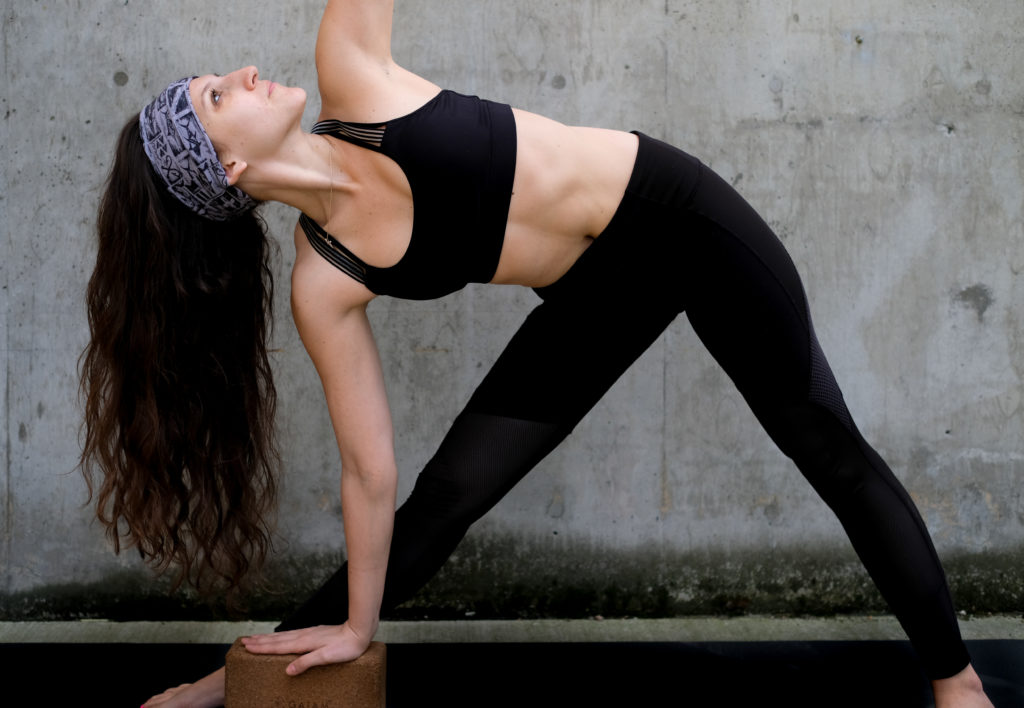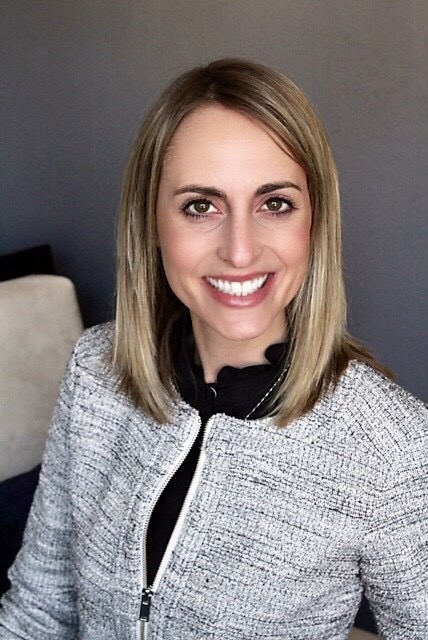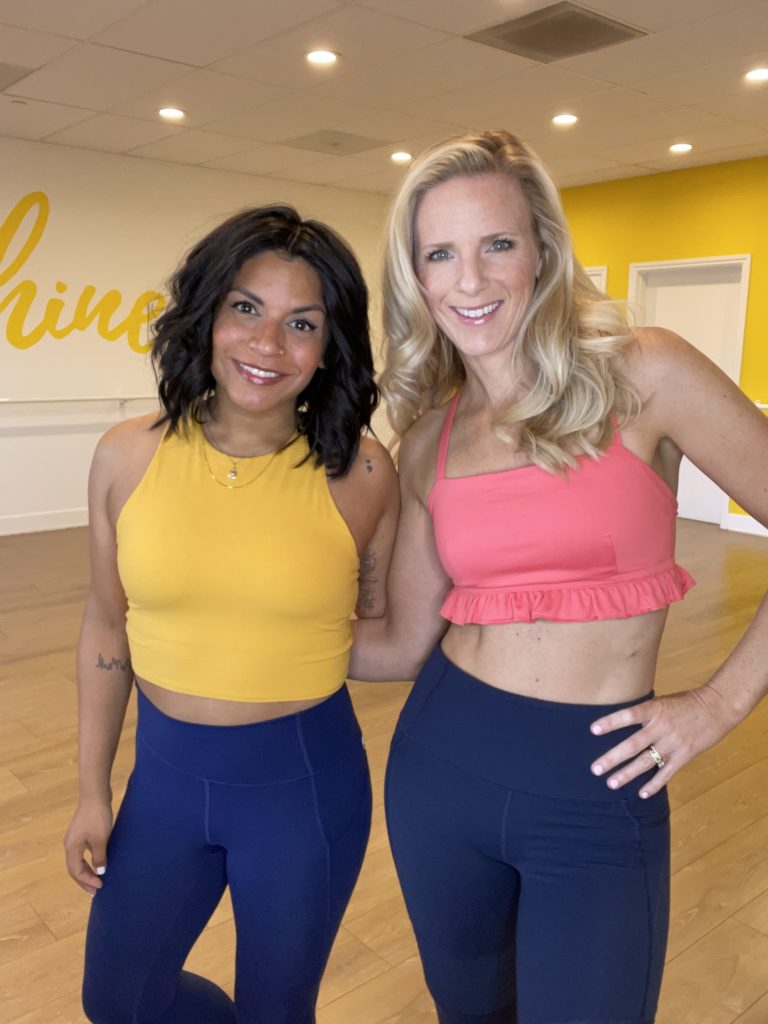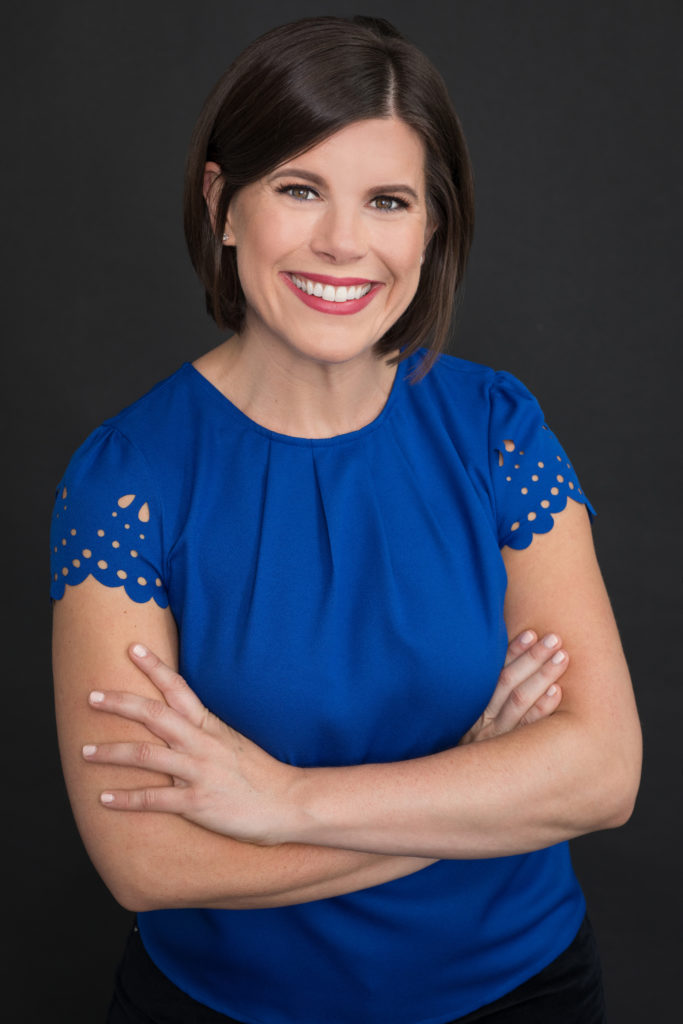We're here to help you maximize your potential and achieve your definition of success.

Grow Towards Your Goals
A Reflection on My Second Annual Instagram Live Series in Celebration of Women’s History Month
Earlier this year, I hosted my second annual Instagram live series in celebration of Women’s History Month. During that series, I featured four guests who are experts in mindfulness, business strategy, fitness, and networking.
I kicked off the series with the topic of mindfulness because I am on a journey to evolve away from the constant pressure of doing more and to realize the benefits of slowing down and being more present. According to mindful.org, mindfulness is the basic human ability to be fully present, aware of where we are and what we’re doing, and not to be overly reactive or overwhelmed.

Heather DelaTorre: Grow Your Mindfulness
In this blog, I’m recapping highlights from my discussions with my four guests, starting with Heather DelaTorre, a certified yoga instructor and project manager in corporate America. Heather’s favorite quote is, “Do one thing, do it well, move to the next,” which certainly describes mindfulness. I ask her to share what her quote means and why it’s her favorite. She shares that it was actually from her coach more than ten years ago when she was in marching band and the color guard.
“I competed at a very high level for Drum Corps International,” says Heather. “We rehearsed twelve hours a day for about a month. Then we spent two months traveling around the country competing against other corps. One of my coaches would notice when we were thinking too far ahead. He would stop us and say, I can tell that you’re thinking about the next thing. And because you’re thinking so far ahead, maybe to the really hard part of the routine coming up in twenty seconds, you’re not focused on the simple thing right now. So, I just want you to focus on exactly what you’re doing in this moment. Do that part really well. And then move to the next. It became this thing he would say to us during the season, and it’s something that I’ve actually said to myself often. I’ve recently started sharing it with some of my yoga classes because it applies.”
Heather’s quote makes me think about how often I am focused on the next thing on my to-do list. It’s a reminder to be fully present, which I think connects with the topic of mindfulness. I ask Heather what role mindset plays in helping us grow towards our goals.
“Having a positive mindset is so important,” Heather shares. “It’s really easy to have negative thoughts about goals, achievements, and next steps for us.” She explains how when we share with someone and hear how they may be doing something similar, we can immediately think that the person is now our competition. But a positive mindset would perhaps think, how can I pick this person’s brain? Or how can we work together so both of us can achieve our goals? If they’ve already achieved bigger goals, maybe they could be a mentor.
What Heather has shared reminds me of an abundance mentality versus a scarcity mentality. I ask if she has always had an abundant way of thinking or if it’s something she has learned.
“I think previously I was of the mindset that if someone’s doing the exact same thing as me, they’re my competition,” says Heather. “So, becoming a yoga teacher, I was in training with ten other people. And we built these relationships going through this two-hundred-hour training together and spending our entire weekends together. I never saw them as my competition. But in reality, now ten new yoga instructors are looking for a job. Are we all going to get a job at the studio where we train? Probably not. Does everybody want to be a yoga instructor at that studio? Probably not. When you’re going through a process of reaching your goals, learning something new, or training for something, if you create those communities and come together, you’ll get so much more knowledge. And then you’re all going to go on different paths. Sure, a couple of people from my cohort did teach at the studio where we trained. But I trained in Seattle, and I moved to California right after. Some people were in the training because they just wanted more knowledge about yoga. And so, it’s important to know that people might be doing the same thing you’re doing, but their end goal may not be the same. You can still create that community and find a way to create something great for everyone.”
I ask Heather to talk about yoga and mindfulness and explain why they are both so important.
“It’s great to practice mindfulness during yoga,” Heather explains. “Teachers will say, we don’t practice yoga to get better at yoga, we practice it to get better at life. And that’s so true. You can come into the yoga room or come onto your mat, and whatever happens there, it’s practice. It’s not perfect. I always try to encourage my students to stay present. I teach a lot of power classes, so we move pretty quickly, and we get our heart rates up. Sometimes you forget to breathe when you get to the middle of class. So, as we hold the pose, I may say, I want you to take some big breaths here. If they forgot that I said that at the beginning of class, who cares? I reminded them, and now they’re like, oh yeah. And it’s doing that repeatedly until we get really good at it. I’ve been practicing for a really long time. A lot of people are like, okay, I’m here to practice physical yoga. But it’s tied into the mental state. And that’s where we can build those strong, mindful skills.”
I ask Heather to share some ways a busy woman can slow down and learn to be more mindful.
“I recently practiced this, and I had to really focus on it and think about it,” Heather shares. “But I’m going to use an example to explain my answer. I went to Seattle about a week and a half ago. And we flew out on a Wednesday, and our flight was at 6 pm. So, I had a full day in front of me. I worked, taught a yoga class, had laundry to do, and had to get my cat ready for the people who were watching him while we were gone. And I said to myself that morning, I don’t want to just be getting through my day to get to my trip. My trip is exciting. And I’m really pumped about it. But at the same time, I wanted to enjoy what I was doing while I was doing it. So, when I woke up, I went about my day as usual. I still worked and had my to-do list. But I found moments to enjoy a couple of sips of coffee and take a breath. When I was reading my emails, that’s when I worried about what my emails said. And then the same thing with my yoga class. Maybe I listened to my yoga playlist in the car to get myself in that vibe. But I didn’t need to worry about what would happen in that class until I got there. It was really nice just to enjoy the day. And then at the airport, I’m thinking I should just keep doing this. I don’t need to be worrying about what’s next on my trip. I don’t need to worry about what I’m doing on Friday while enjoying time with friends on Thursday. I can just be in that moment and enjoy time with them. You can do things efficiently and not be rushed. There’s a difference between physically going somewhere and doing something fast, and it happening in your brain. That’s really hard to separate. And even really hard just to slow your brain down. So, it’s something to consciously think about.”
Heather shared the importance of mindfulness, focusing on one thing at a time and doing it well. The concept of slowing down also showed up in my conversation with Lindsay Schmit, owner and consultant at Right Hand, as we talked about why it is essential to take the time to work on your business. Lindsay is an expert on business planning and strategy.

Lindsay Schmit: Grow Your Business Strategy
I ask Lindsay to share why it’s so important to take the time to pause and work on our businesses.
“I think for starters, revenue is one,” says Lindsay. “Studies have shown that businesses that plan grow 30% faster than those that don’t. Second, setting aside time to look at your business proactively allows you to look at it more holistically. It could be that I need to invest in a system that solves a need versus just saying I’m going to solve it myself. Stepping back allows for better decision-making. There are a million decisions you make every day about your business. And I think that’s where a solid plan comes into place. As a small business owner, time and resources are limited. So how do you best allocate your resources accordingly? Your time, your investments, and taking time to work on your business will allow you to do that and make better decisions.”
When we talk about the word strategy or planning, it can feel overwhelming. I ask Lindsay to share the key elements of a successful business plan or strategy.
“I think people often use business plan or strategy interchangeably,” says Lindsay. “As a startup business, having a solid business plan is important. If you’re working with investors, you’re trying to set that map, if you will, for what your business will be and how it will operate. There are also business owners and service-based professionals working in their business for a couple of years and looking to grow to that next level. So, I think at that point, we’re talking more about strategic planning and business strategies to address how you get to that next level. It’s choosing how you’re going to grow and then committing to that. So, I would say, when it comes to a business plan or doing strategic planning, it starts with a solid foundation. Whether it’s a plan or strategy, you need three critical pieces to start with. The first is a vision. A vision tells you where you’re going. And ideally, you want a vision that’s five to ten years out that articulates where you’re going and how to know when you’re there. The second piece is a mission. Why do you do what you do? Why does your business exist? And then lastly, your core values. Those are your guiding principles for your business. They determine how you conduct business and how you work with your clients. From there, I think you need to have some high-level objectives, whether you call them objectives or goals. They’re high-level goals that you’re looking for your business to achieve.”
Lindsay continues by sharing a few questions that every business owner should be able to answer:
What products or services am I going to offer?
Who is my target audience, or who are my customers?
She also recommends doing a SWOT analysis as the final step to begin developing your strategies.
I ask Lindsay what mistakes she has seen business owners make when planning. She says one mistake is getting sidetracked by all the new things and ideas that come about. While it’s great to look at what other businesses are doing, it can distract new business owners who may not take the time to assess every new opportunity and ask if it aligns with their strategy. Another mistake is creating a plan but not building out strategies to achieve it and take action.
I ask Lindsay if she has any tips or strategies that might help us execute and put our plans to work.
“I think for some, that might be something as simple as hiring a coach, someone to hold you accountable,” says Lindsay. “I think another strategy, depending on if you are a solopreneur, might be building a mastermind with a group of other business owners around you. Accountability is what sticks out for me as one of the strategies. Another piece might be sharing with your team and helping them see the work that they’re doing and how that connects to the bigger outcomes.”
Lindsay shared the three critical components of a strategy or plan, vision, mission, and core values. When I connected with Hillary Lewis and Yaya Margarita, the owners of Shine Studio Fitness, a boutique fitness studio in Southern California, they also emphasized the importance of thinking through the bigger picture to ensure they are doing what they set out to do. And they shared another important execution tactic: understanding what is working and what is not working.

Hillary Lewis & Yaya Margarita: Grow Your Fitness
I ask them what they are doing to grow towards their goals this year.
“One thing that Yaya and I have been doing is sitting with each other and talking about our goals for our business and ourselves,” says Hillary. “As business owners, we often get so wrapped up in every day that we’re like, hey, are we doing what we set out to do? What kind of goals do we want to achieve this year?”
“We really had to be honest with ourselves this year and weigh the pros and cons of what was working for us and what wasn’t, no matter how invested and how much we wanted some things to work,” agrees Yaya. “We realized that we had to drop certain things to propel us to the next level.”
“I know as women, we can do it all,” says Hillary. “But you also have to prioritize your time. So, I have to ask what we want the next five years to look like and then work backward and make those steps toward what we want the future to look like.”
Yaya mentioned that they sat down and started figuring out what was working and what was not. So, I ask how they decided what to drop and what to keep because that can be a really difficult process.
“It was so difficult,” Yaya confirms. “We had to be honest, and that is hard to do. Because again, as moms, we want to do everything. And a lot of that hesitation as to why we had to drop a few things was fear or how it looked to other people. We literally wrote everything down and wrote a pros and cons list.”
“Yes,” agrees Hillary. “And I think when you really want to grow toward that next big goal, you have to think so big and then start to piece together the smaller goals that will get you to the larger goal. So, if we want to be here in ten years or five years, what does that look like in one year? What does it look like in two and three? You think about those steps along the way. And then ask, what does that mean for today? What step do we have to take today to get to that point?”
Yaya mentioned fear, and I’m sure mindset plays a big part in this. I ask her how mindset can help you grow in the direction of your goals. Yaya says that it has to be consistent. “I’m an artist,” she shares. “So, I’ll do things when I’m inspired. But you can’t really work that way. You have to be consistent and show up, even if you’re not inspired. Consistency drives any type of growth, whether that’s working out or working.”
“We have been working a lot on manifesting and mindset,” agrees Hillary. “You have to believe that it can happen, right? That we’re worthy of that happening to us. I’ve been reading a lot on manifesting lately. And I’m like, why isn’t this manifestation working for me? But I keep reading about the action behind it, right? So, you have to believe it with your entire core, and then you have to have the action behind it to make that a reality. It’s not just like, oh, I want a million dollars. And then you sit on the couch all day. What are the steps to get you there? That has been a little bit of an awakening lately, with my mindset, like, yes, I can want these things. But you also have to become so laser-focused on that goal that you really can’t think about anything else. And so, your actions are going to align with it.”
Along with mindset, I ask how important it is to have a consistent fitness routine. Hillary shares that they believe it’s very important. As fitness studio owners, they want people to get great workouts that challenge them and help them feel healthy. But they also want to make fitness accessible to anyone, whether you’re an advanced athlete or have never worked out before. Hillary shares that they believe working out is for life. It’s not for unrealistic goals that turn fitness into a chore, but for the longevity of health so you can ride bikes with your grandkids one day. And she explains that doing it together with like-minded women can create a nice mental break where everyone is having fun together.
Hillary makes a phenomenal point to think about fitness for longevity, health, and life. I know there were times in my fitness journey when it was all about fitting into a certain size, and I’m excited that I have now shifted, for the most part, to fitness being about feeling good and being present. I ask Hillary how she thinks women can adopt that mindset where fitness is really for life, longevity, and health.
“I think that we get so caught up in looking in the mirror and experiencing negative self-talk as women,” says Hillary. “We still do it even though we’re advocating for the opposite of that. So, it’s about looking at the positives. Focus on the parts of your body you love, and then if you work out three or four days a week, say, I’m not only going to enhance my cardiovascular system, gain more muscle, look more toned, but I’m going to enhance my overall life. You have to think about your body as more than just what you think about yourself or what someone else might think about you. You have this one body, so take care of it because this is it. You don’t need to compare yourself to someone else next to you, because you will never be someone else. Even if we were in the gym, ate the same thing, and worked out the exact same way, we’re just different.”
“I read this quote that basically said don’t talk to yourself in a way that you wouldn’t talk to a little kid,” adds Yaya. “You wouldn’t tear apart a little girl’s body. Being parents to a beautiful little girl, you don’t want them to hear these things and perpetuate that cycle of I’m not good enough. We have to start finding those positives and lifting each other up.”
“Laura, one of our clients, came to me the other day with a story,” shares Hillary. “She was with her family and grandkids, and they were all talking about how they could do planks, right? And they were doing this move we had happened to do in pilates where you put your legs over your head. It’s difficult. And so, Laura was like, oh, I can do this. And then they played for a really long time, and she was like, I can do this too. Her family was like, whoa, what is going on? The next day her daughter asked if she was sore, and she said no because she works out every day. And that made her feel so amazing. When she was telling me that story, I could tell that she just felt so proud of herself for being so consistent and sticking with it. She looks amazing, but she also feels amazing. And when you feel amazing, you exude that from your cells. The consistency makes you feel so much better about yourself, and then other people’s negative comments don’t really affect you anymore.”
Hillary and Yaya highlighted how a consistent workout routine can help you grow your confidence. And, of course, consistency and confidence are two of the four characteristics of goal achievers!

Lindsey McMillion: Grow Your Network
Lindsey McMillion, the owner of McMillion Consulting, is a speaker, writer, and trainer who is known as LinkedIn Lindsey. In our conversation, she described courage’s role in growing your professional network. I start by asking her why growing a professional network is so important.
Lindsey jumps in by explaining that one of the three things that make growing your professional network valuable is that it keeps you top of mind. “When you’re networking, making connections, and having conversations, that keeps you top of mind,” says Lindsey. “The second thing is it allows you to give back. And when I think of giving back related to networking, I mean introducing people. So, as I’m meeting people, I’m constantly able to be a connector which is part of my DNA anyways. It’s why I love LinkedIn so much and tools like Instagram. But being able to give back and introduce other people to each other is only possible when you’re focused on building your network authentically and actually knowing the people you’re meeting or connecting with. The third reason is that it allows you to expand to new opportunities for learning, growing, and making an impact.”
Lindsey continues with an example in which she recently published an article in Authority Magazine. When you publish in that magazine, the publisher encourages you to promote your article. When Lindsey did that, she noticed attraction and engagement, which was wonderful in and of itself, but she took it a step further. She investigated the people she didn’t know who were engaging and looked at one person in particular from top to bottom. Lindsey says that she calls it the 22nd rule. “We had a few mutual connections, which is how I assumed he found the posts to begin with, but who knows until I reach out,” says Lindsey. “I invited him to connect, and I personalized it because we have an 85% chance when we authentically send that personalized invite. He accepted my invitation, and then I did the next best thing when you’re trying to build your network. I followed up.” Lindsey continues to share how they continued to check in, which eventually led to more opportunities, and how it’s a perfect example of not time stamping a conversation and consciously building a network.
Lindsey mentioned the 22nd rule, so I ask her to explain what that means.
“I have trained 1000s and 1000s of people in almost ten years,” says Lindsey. “And one behavior that I noticed over the years is when someone is looking at a profile, they just stay right at the top. And you decide based on that anchor area if you want to send me a message or connect with me or follow me, and you stop there. But let me tell you the value of taking an extra 19 seconds just to scroll through my whole profile and see what else you can learn about me. You’ll find aspects of my story that would only give you a stickier and more relevant way to make a human connection with me and build rapport even more quickly. So, I always suggest taking that extra time to scan the complete profiles and find what little nuggets you would have missed.”
I ask Lindsey three easy steps someone can take to leverage LinkedIn better.
“It’s really hard to narrow it down to just three,” Lindsey says. “And these are not the only three. One is to include your credibility in your LinkedIn profile. When you get that new accolade or promotion, don’t just go to LinkedIn and update LinkedIn as if it were your resume. Build out a story to help people understand what it is and what it means to you. We take for granted, especially in larger companies and organizations, that we have internal jargon. I know what Forum means. And I know what Fast Track Academy means, but nobody else does. So, you’ve got to quantify it and put context around it. LinkedIn is the place to position yourself to speak in the first person to make it conversational. The other tip is being a valuable resource, and there are a couple of ways to do that. One is to encourage people behind the scenes constantly. But why not give somebody those kudos and congratulations, or celebrate them publicly on LinkedIn too? It can be through a feature called kudos, or it can be by giving them a recommendation. When you write a recommendation for somebody, and they didn’t ask for it, they feel like a million bucks. And the last tip is if I read an article that could benefit you, I don’t want to just keep that between you and me because there are all these people that are in similar spaces or situations. So, I want to be sure that I’m sharing that content publicly because my guess is that somebody in my network could benefit from reading it too.”
Lindsey has shared how to have credibility by paying attention to your own profile, being a valuable resource publicly, not just behind the scenes, and really connecting with people. “Don’t be afraid to build your network with other amazing people who are even in your same space,” says Lindsey. “And all of us do wildly different things. And am I going to hire each of those folks individually? Probably not. But I still want to connect with them. Because I have an offline relationship with them, and they may know somebody who I need to meet. So, make sure that you’re actually connecting with people and bringing those offline networks online through LinkedIn.”
I hear such an abundance mentality in all of Lindsey’s answers. And I think that’s probably a big part that goes into growing your network. Lindsey agrees completely. “You know, I’ve made this joke that I’m like this LinkedIn Lindsey Fairy Godmother. I love just reminding people that LinkedIn is really no different than what you do offline. It just happens to be in a digital format.”
I hope these four conversations have inspired you to grow your mindfulness, business strategy, fitness routine, and network.
And with that goal achievers keep celebrating your weekly wins, noting your lessons learned, and identifying your priorities for next week so you can consistently pursue progress in the direction of your goals.